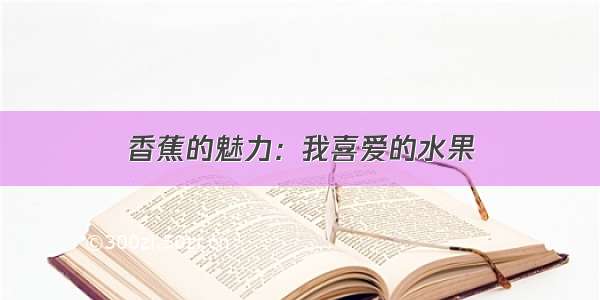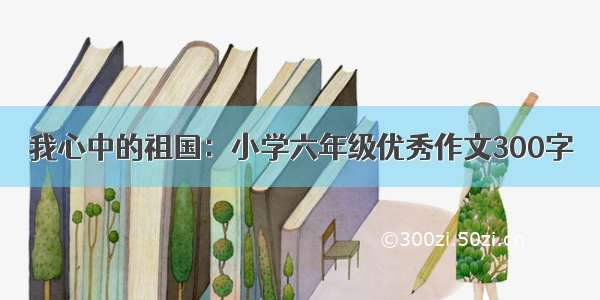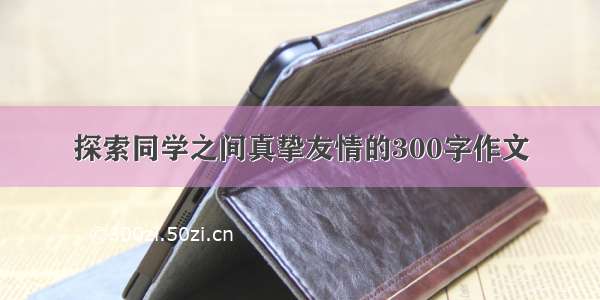
一不留神,心心念念的夏天就来了。春天即将离去,炎暑降临,万物至此皆长大,正是孩子们了解大自然的最好时机,因此,小E挑选了适合3-8岁孩子的书单,给孩子打开一扇亲近自然的窗户。
* 以下绘本均可在京东等平台购买
The Tiny Seed
《小种子》
作者:艾瑞·卡尔
适合年龄:3岁以上
卡尔爷爷的经典绘本,解释了种子是如何传播、成长为植物、再度传播新种子的生命循环。
秋天,风把花种带到了远方。
部分被风送走的种子,有些掉进了海里,有些被小鸟吃掉了。部分生根发芽的种子,有些被孩子踩倒了,有些被摘下来送人。
只有一颗小种子,顺利长大,开出一朵巨大的花。下一个秋天,花朵把它的花种送进风里,开始了新的生命历程。
00:29
向上滑动阅览
It is Autumn. A strong wind is blowing. It blows flower seeds high in the air and carries them far across the land.
秋天到了,大风吹了起来。大风把花的种子吹到半空中,带着种子飞向遥远的地方。
One of the seeds is tiny, smaller than any of the others. Will it be able to keep up with the others? And where are they all going?
有一颗小种子好小好小,比其他的种子都小。它能跟的上其他的种子吗?它们都要飞到哪儿去呢?
One of the seeds flies higher than the others. Up, up it goes! It flies too high and the suns hot rays burn it up.
有一颗种子飞的好高好高,越来越高,越来越高……飞得太高了,所以被火热的太阳烧掉了。
But the tiny seed sails on with the others.
不过,小种子还是跟着大伙儿继续飞行。
Another seed lands on a tall and icy mountain. The ice never melts, and the seed cannot grow.
有一颗种子飞到了高高的雪山顶上。山顶的雪不融化,种子冻得不能发芽。
The rest of the seeds fly on. But the tiny seed does not go as fast as the others.
其它的种子继续飞行,不过,小种子没办法飞得和大伙儿一样快。
Now they fly over the ocean. One seed falls into the water and drowns.
它们飞过海洋。有一颗种子掉进蓝蓝的大海里,淹死了。
The others sail on with the wind. But the tiny seed does not go as high as the others.
其它种子还是在大风里继续飞行,不过,小种子没办法飞得和大伙儿一样高。
One seed drifts down onto the desert. It is hot and dry, and the seed cannot grow.
有一颗种子掉进了沙漠里,沙漠又干又热,种子发不了芽。
Now the tiny seed is flying very low, but the wind pushes it on with the others.
小种子飞得好低好低,幸好大风推着它,它又跟上了大伙儿。
Finally the wind stops and the seeds fall gently down on the ground. A bird comes by and eats one seed.
大风终于停了下来。所有种子都轻轻地飘到了地面。
The tiny seed is not eaten.
一只大鸟经过,吃掉了一颗种子。
It is so small that the bird does not see it.
小种子没被大鸟吃掉,它太小了,大鸟根本没看见它。
Now it is Winter.
冬天到了。
After their long trip the seeds settle down.
经过了长途旅行,种子们终于安顿下来。
They look just as if they are going to sleep in the earth.
他们静静地躺在泥土里,好像要睡着了。
Snow falls and covers them like a soft white blanket.
雪花飘落在种子身上,像一张柔软的白毯子。
A hungry mouse that also lives in the ground eats a seed for his lunch.
地底下,一只饥饿的老鼠把一颗种子当午餐吃掉了。
But the tiny seed lies very still and the mouse does not see it.
不过,小种子安稳地躺在泥土里,老鼠没有发现它。
Now it is Spring.
春天来了。
After a few months the snow has melted. It is really spring! Birds fly by. The sun shines. Rain falls. The seeds grow so round and full they start to burst open a little.
几个月后,雪融化了,春天真的来了!鸟儿飞过,阳光灿烂。下雨了,种子长得又圆又满,有点裂开了。
Now they are not seeds any more. They are plants. First they send roots down into the earth. Then their little stems and leaves begin to grow up toward the sun and air.
现在它们不再是种子了,他们是植物。首先它们把根扎进土里,它们茎和叶子开始朝着太阳和空气生长。
There is another plant that grows much faster than the new little plants.
还有另一种植物比新的小植物长得快得多。
It is a big fat weed. And it takes all the sunlight and the rain away from one of the small new plants. And that little plant dies.
这是一个大肥杂草,它从一株小植物那带走了所有的阳光和雨水,然后那个小植物就死了。
The tiny seed hasn begun to grow yet. It will be too late! Hurry! But finally it too starts to grow into a plant.
小种子还没有发芽呢。快呀,再不发芽就来不及了!终于,小种子也长成了植物。
The warm weather also brings the children out to play. They too have been waiting for the sun and spring time.
温暖的天气也使孩子们愿意出去玩,他们也一直在等待着太阳和春天的到来。
One child doesn see the plants as he runs along and--Oh! He breaks one! Now it cannot grow any more.
一个孩子在跑过去的时候没有看到这些植物……噢,他踩坏了一个!这下它再也不能生长了。
The tiny plant that grew from the tiny seed is growing fast, but its neighbor grows even faster. Before the tiny plant has three leaves the other plant has seven! And look! A bud! And now even a flower!
我们的小种子长成的小植物飞快地生长着,但它的邻居长得更快。小植物才三片叶子的时候,邻居已经有七片了!看!花蕾!哦,花都开了!
But what is happening? First there are footsteps. Then a shadow looms over them. Then a hand reaches down and breaks off the flower.
但什么事在发生呢?首先是一阵脚步声,然后一个阴影罩住了他们。最后一只手伸了下来,折断了花。
A boy has picked the flower to give to a friend.原来是一个男孩把花送给了朋友。
It is Summer.
夏天来了。
Now the tiny plant from the tiny seed is all alone. It grows on and on. It doesn stop. The sun shines on it and the rain waters it. It has many leaves. It grows taller and taller. It is taller than the people.
现在这株小种子长成的小植物孤孤单单的,它不断地生长,停不下来。阳光照耀它,雨水浇灌它。
It is taller than the trees. It is taller than the houses. And now a flower grows on it. People come from far and near to look at this flower. It is the tallest flower they have ever seen. It is a giant flower.
它有许多叶子,长得越来越高了,比人还高,比树还高,比那些房子还要高。现在上面开出一朵花来,人们从四面八方赶来观赏这朵花。这是它们见过的最高的花,这是一朵巨大的花。
All Summer long the birds and bees and butterflies come visiting. They have never seen such a big and beautiful flower.
整个夏天,鸟儿、蜜蜂和蝴蝶都来参观,它们从未见过这么美丽的花朵。
Now it is Autumn again.
现在又是秋天了。
The days grow shorter. The nights grow cooler. And the wind carries yellow and red leaves past the flower. Some petals drop from the giant flower and they sail along with the bright leaves over the land and down to the ground.
白天变短了,夜晚变得更凉爽,黄色和红色的叶子被风吹落,经过花朵。一些花瓣从巨大的花朵上落下,它们和明亮的叶子一起飘过大地,落到了地面。
The wind blows harder. The flower has lost almost all of its petals.
It sways and bends away from the wind. But the wind grows stronger
and shakes the flower.
风刮得更猛了,这朵花几乎失去了所有的花瓣,它在风中摇摆弯曲着,似乎想躲开风吹,但是风越来越强,不停的摇晃着花朵。
Once more the wind shakes the flower, and this time the flowers seed pod opens. Out come many tiny seeds that quickly sail far away on the wind.
风再一次吹动了花朵,这一次花朵的种子荚打开了,从里面出来了很多很多的小种子,它们随着风很快地飘落到很远的地方。
Stellaluna
《星月》
作者:珍妮儿肯侬
适合年龄:4-7岁
小鸟和蝙蝠有不一样的习性:
鸟儿白天活动,吃虫子,在鸟巢里睡觉;有夜视能力的果蝠,晚上活动,吃水果,倒挂着睡觉。
一只不小心掉进鸟巢里的小果蝠星月,为了生活,不得不跟着鸟妈妈改变了习性。直到重新回到果蝠的族群后,星月才意识到:
每一种生命,都是生态系统中重要的一环。
读这本绘本,能帮助孩子了解鸟与蝙蝠的生活习性,还能改变对蝙蝠的恐惧心理。
Outside Your Window: A First Book of Nature
《你的窗外:第一本自然之书》
作者:尼古拉·戴维斯
适合年龄:3-7岁
在这本书中,英国动物学家、作家、BBC野生动物节目的主持人尼古拉·戴维斯,用充满韵律的文字,捕捉了自然界的景象。
美丽插图和文字让读者踏上了一段如梦似幻的旅程,让读者穿越了四季,体味了融化的冰凌和令人昏睡的夏日之音,感受了采摘浆果的季节和慵懒的冬天。
鲜艳的书页上点缀着诗歌,完美地捕捉了发现时的惊叹之感。作者对动物的观察细致入微。蜥蜴“像思想一样快/一会在那儿,一会儿又不见了”。一匹奔马让人战栗,但在你喂它胡萝卜的时候,“它的黑眸是静谧的,它的鼻子是丝滑的,比你的脸颊更加柔软”。
奇妙科学课也适时出现。比如,彩虹是如何出现的,真菌的生命周期为何。书中还给了一些活动建议(“在你的小窝里要做的事情:1.坐下来思考;2.注意周遭的东西,譬如泥土的气味或者甲虫们的动静。”)书里甚至有小鸟蛋糕的食谱和堆肥的配方。
这本画面美、文字美的诗歌绘本告诉我们:
无论窗外是城市街道还是乡村草地,孩子都能在周围的世界中,观察到新奇的景色。
大自然就在我们家门口,等着我们去发现。
Cricket Song
作者:阿内·亨特
适合年龄:4-7岁
一本讲述了为夜晚做准备的各种动物的睡前故事。
夜晚,住在海边的小男孩,在睡梦中听到了蟋蟀的歌声。蟋蟀又引出了兔子、还有向海边倾斜的小院子……海里还能看到鲸鱼的尾巴、发光的水母……
当黎明到来时,在海洋的另一边,孩子开始睡觉了。在他的睡梦中,又会看到什么动物呢?
最特别的是,画面底部还有一条横幅,显示了太阳从一个大陆,到另一个大陆的过程。
Whose Nest?
作者:维多利亚·科克伦
适合年龄:3-6岁
小朋友能猜到绘本中巢穴都是谁的吗?
上一页会给出巢穴周围的线索——羽毛、脚印、食物等生物习性,猜猜是谁的巢穴。然后翻到下一页,确认是谁住在那里。
比如晚上觅食,喜欢吃橡果,会冬眠的是?
打开下一页发现是睡鼠。
绘本中用解谜的方式,展示了睡鼠、树蛙、小丑鱼、老鹰、兔子、绿头鸭、大黄蜂、壁虎……等各种小动物栖息地的自然环境。
Whose Poop is That?
作者:达林·隆德
适合年龄:3-7岁
在这本孩子最喜欢的“屎尿屁”科普绘本中,作者以7种不同动物的便便,展示了其中的科普知识。
在便便中,我们可以找到骨头、羽毛、皮毛和小树枝……便便还有不同的颜色和形状,这主要取决于各种动物的不同的饮食。
绘本最后还有一些有趣的科普小知识:便便对环境的重要性,以及便便可以用来筑巢、标记领地和播撒种子。
绘本用猜谜游戏的形式,科普了便便的不同,增加绘本的趣味性,吸引孩子的注意力。
Going Home: The Mystery of Animal Migration
作者:玛丽安·伯克斯
适合年龄:4-8岁
可能是把动物迁徙讲的最生动的绘本。
从BBC纪录片中,我们和孩子常常看到成群迁徙的动物,比如企鹅、驯鹿、大象……这种迁徙通常都是长距离的,比如帝王蝶,一次往返甚至需要几代蝴蝶的时间。
书中写了十种最具代表性的迁徙动物:红海龟、帝王蝶、海牛、红喉北蜂鸟、太平洋鲑鱼、加拿大鹅、加利福尼亚灰鲸、北美驯鹿、北极燕鸥和帝企鹅。
动物为什么要迁徙?又是怎么找到迁徙方向的?
从这本书中寻找答案吧。
Who Will Plant a Tree?
作者:杰里·帕洛塔
适合年龄:5-6岁
你知道除了人以外,动物们也会帮忙种树吗?这本超级可爱的绘本,就讲述了这样一个有趣的故事。松鼠、黑熊、野马、甚至海豚、大雁和蚂蚁等各种动物,最后都种出了不同的树哦。
最搞笑的是,在故事的末尾,作者还很认真地问大家,大象的便便里有没有种出一颗树呢?















